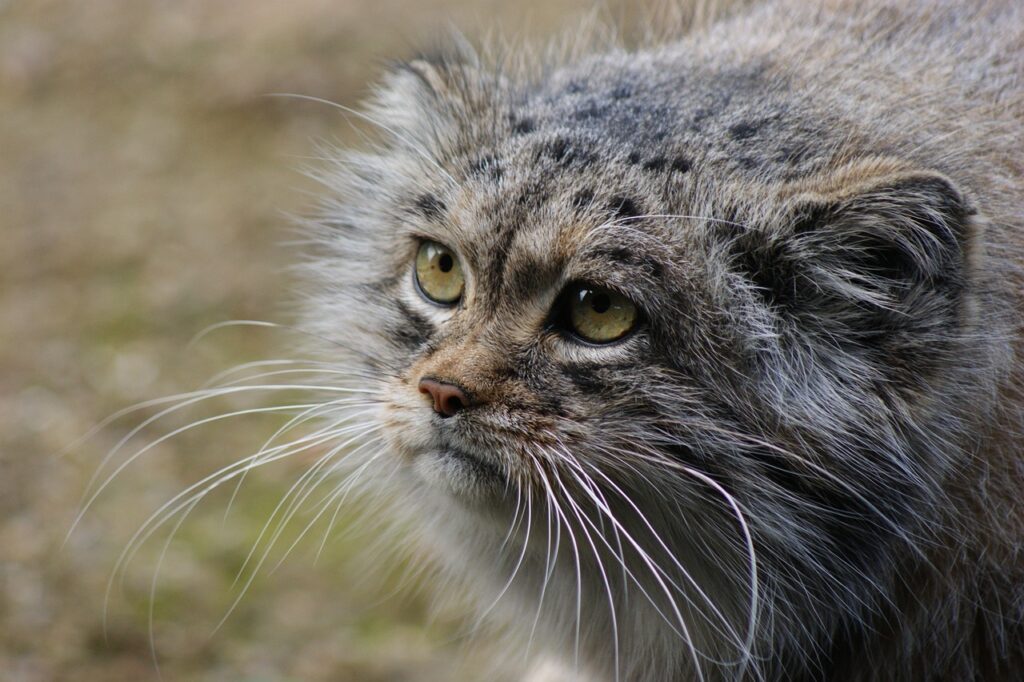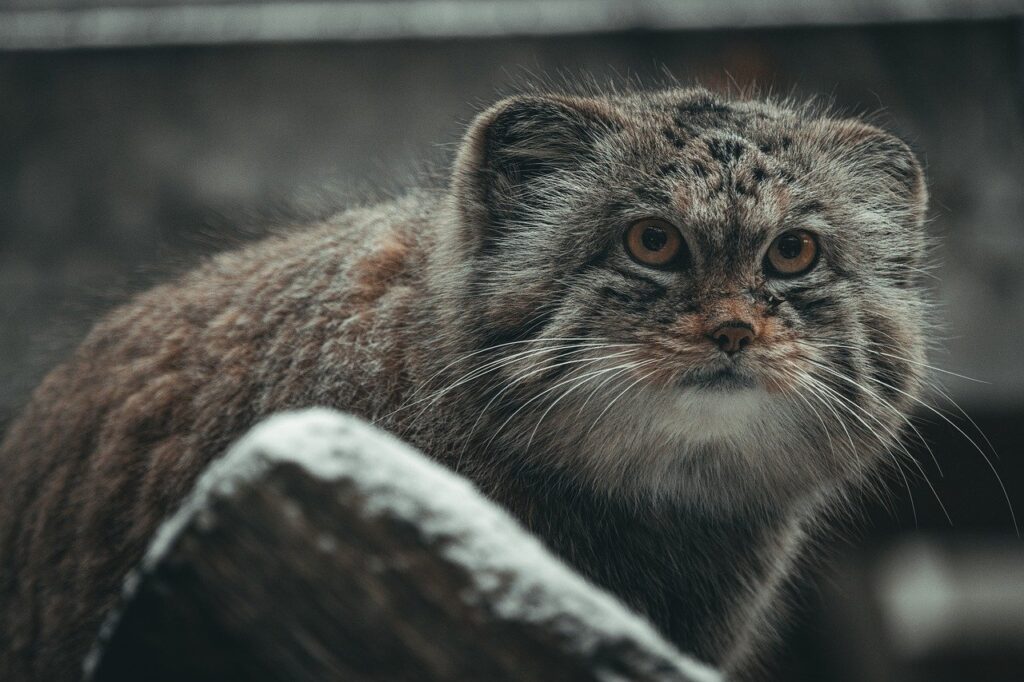Discover the fascinating world of Pallas’s cats! Learn about their habitat, behavior, unique traits, and conservation efforts for this adorable wild feline.
When you think of wild cats, majestic lions or sleek leopards might come to mind. But let me introduce you to an underrated feline superstar: the Pallas’s cat. Known scientifically as Otocolobus manul, this small, fluffy wild cat may not roar like a lion, but it has a charm all its own. With its perpetually grumpy expression and quirky behaviours, the Pallas’s cat deserves a spotlight. In this article, we’ll dive into its unique features, habitat, behaviour, and conservation status. Whether you’re a wildlife enthusiast or a casual reader, prepare to fall in love with this fascinating creature.
What Is a Pallas’s Cat?
Let’s start with the basics. Pallas’s cats are small wild cats roughly the size of domestic cats, but their thick fur and stocky build make them appear much larger. Native to the rocky steppes and high-altitude grasslands of Central Asia, these cats are built to survive extreme conditions.
Physical Features
- Fluffy Appearance: Their dense, double-layered fur helps them withstand temperatures as low as -50°F (-46°C). The fur is the longest of any cat species in proportion to its size.
- Grumpy Expression: Thanks to their flat faces, wide-set eyes, and small ears, they always look like they’ve woken up on the wrong side of the bed.
- Compact Build: Weighing between 5 to 10 pounds (2.5 to 4.5 kilograms), they have short legs and a rounded body that’s perfect for navigating rocky terrains.
Fun Fact: The Pallas’s cat’s pupils are round, unlike the vertical slits typical of most small cats. This is a feature they share with larger felines like lions and tigers.

Where Do Pallas’s Cats Live?
Pallas’s cats are true masters of adaptation. They inhabit remote regions across Central Asia, from Mongolia and China to parts of Russia, Iran, and the Himalayas. You’re unlikely to stumble upon one, as they prefer desolate, uninhabited areas far from human activity.
Habitat Highlights:
- High-Altitude Living: They thrive in elevations of up to 16,000 feet (4,800 meters).
- Rocky Outcrops and Crevices: These provide shelter from predators and harsh weather.
- Sparse Vegetation: Their greyish-brown fur camouflages them perfectly against their surroundings.
Despite their hardy nature, their habitats are under threat from human activity, climate change, and competition with other predators.
What Do They Eat?
Pallas’s cats are carnivorous, feasting on small prey that’s abundant in their habitat. Their primary diet includes:
- Pikas: These small, rabbit-like mammals are their favourite snack.
- Rodents: Voles, gerbils, and other small mammals make up a significant part of their diet.
- Birds and Insects: Occasionally, they’ll hunt ground-dwelling birds or large insects.
Hunting Style:
Stealth is their superpower. Pallas’s cats rely on ambush tactics, patiently waiting for the perfect moment to pounce. Their low-slung bodies and excellent camouflage make them highly efficient predators.
Behaviour and Lifestyle
Pallas’s cats are solitary and elusive, which adds to their mysterious allure. Here’s what we know about their day-to-day lives:
Daily Routine
- Crepuscular Creatures: They’re most active at dawn and dusk, avoiding predators and extreme weather during midday.
- Burrow Borrowers: While they don’t dig their own dens, they often take over burrows abandoned by marmots and foxes.
Unique Traits
- Fluffy Tail Signals: They use their long, bushy tails for balance and as a signal to communicate with other cats.
- Silent Stalkers: Unlike domestic cats, they rarely vocalize, making them nearly undetectable in the wild.
Conservation Status
Here’s the sobering truth: the Pallas’s cat is listed as Near Threatened by the International Union for Conservation of Nature (IUCN). While they’re not yet endangered, their populations are declining due to:
- Habitat Loss: Expansion of agriculture and human settlements is encroaching on their territories.
- Hunting and Poaching: They’re often killed mistakenly, as their fur resembles that of more common predators.
- Declining Prey: Changes in ecosystems have led to reduced numbers of pikas and other small mammals.
What Can Be Done?
Efforts are underway to protect these unique felines. Conservation initiatives include:
- Habitat Protection: Preserving their natural environments through protected areas.
- Research and Monitoring: Learning more about their behaviour and needs.
- Community Awareness: Educating locals about the importance of Pallas’s cats in the ecosystem.
Why Pallas’s Cats Are Social Media Stars
Despite their elusive nature, Pallas’s cats have become internet sensations. Their expressive faces and fluffy coats make them irresistibly photogenic. Memes, videos, and documentaries featuring these adorable “grump-cats” have introduced millions to their world.
Example:
A viral video by a wildlife photographer captured a Pallas’s cat peeking out from behind a rock, its wide eyes and thick fur drawing comments like, “It’s like a cartoon character come to life!”

Fun Facts About Pallas’s Cats
Let’s wrap up with some quirky trivia about these fascinating creatures:
- Ancient Roots: Fossil evidence suggests that Pallas’s cats have been around for over two million years.
- Name Origin: They’re named after German naturalist Peter Simon Pallas, who first described them in 1776.
- Cuteness Overload: Their kittens, known as “paws with fluff,” are even more adorable than the adults.
- Silent Hunters: They rarely meow or roar but can produce a range of sounds, including growls and purrs.
- Stealth Masters: Their unique ability to stay motionless for extended periods makes them nearly invisible to both prey and predators.
Final Thoughts
The Pallas’s cat may not be as well-known as lions or tigers, but it’s every bit as fascinating. Its quirky features, mysterious lifestyle, and vital role in its ecosystem make it a species worth admiring and protecting. By raising awareness about these unique cats, we can help ensure their survival for generations to come.
So, the next time you see a meme or a video of a fluffy, grumpy-looking wild cat, remember: you’re looking at one of nature’s most extraordinary creations – the Pallas’s cat.
🐾 Hug the Cutest Comfort! 🐱 Adorable Cat Plush Body Pillow – Perfect Gift for All Ages! Soft, Snuggly & Simply Irresistible. 🛒 Grab Yours Today!
